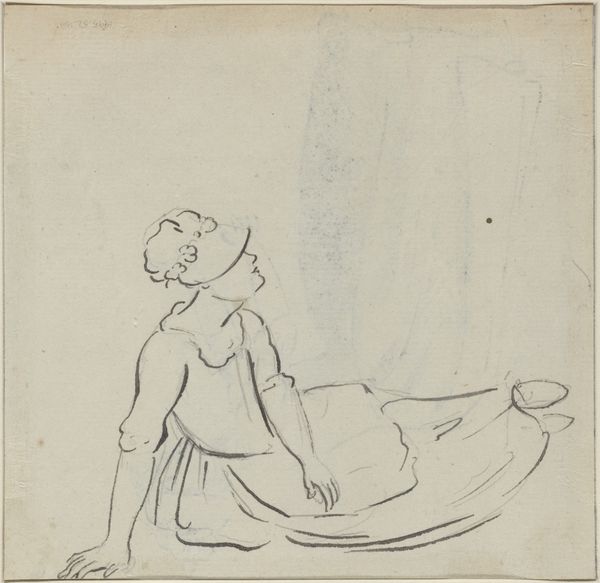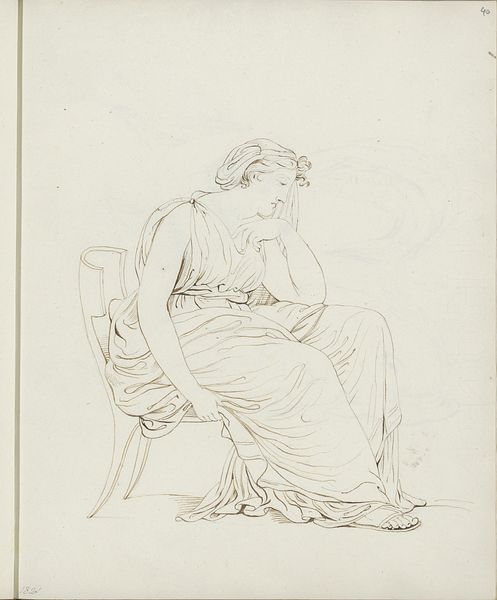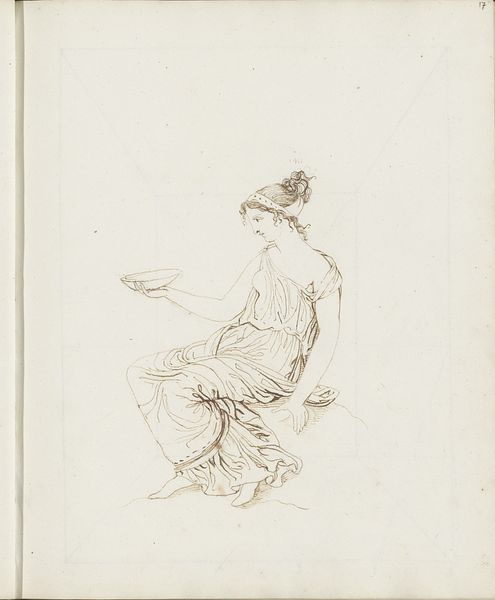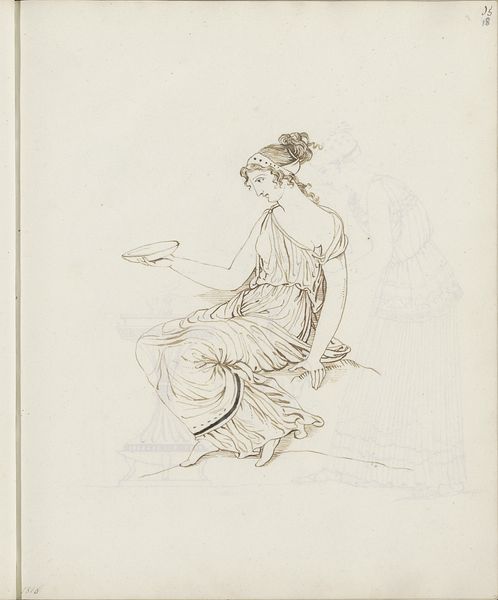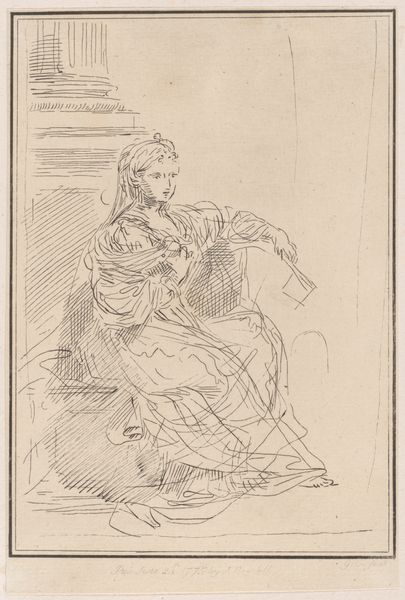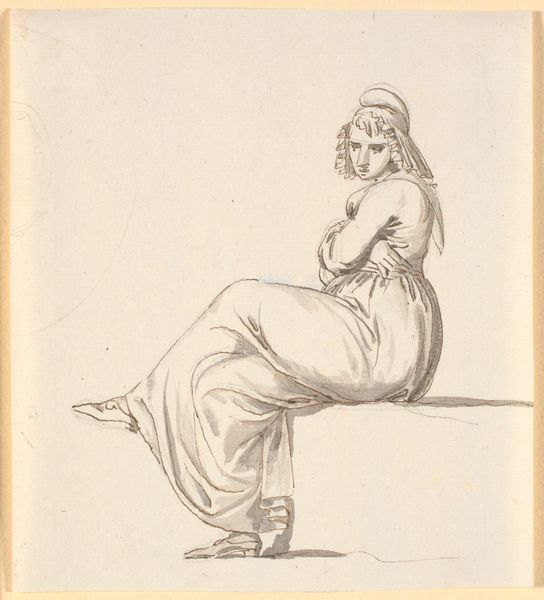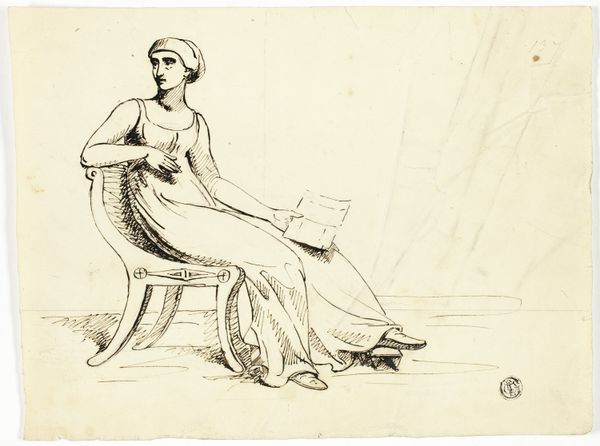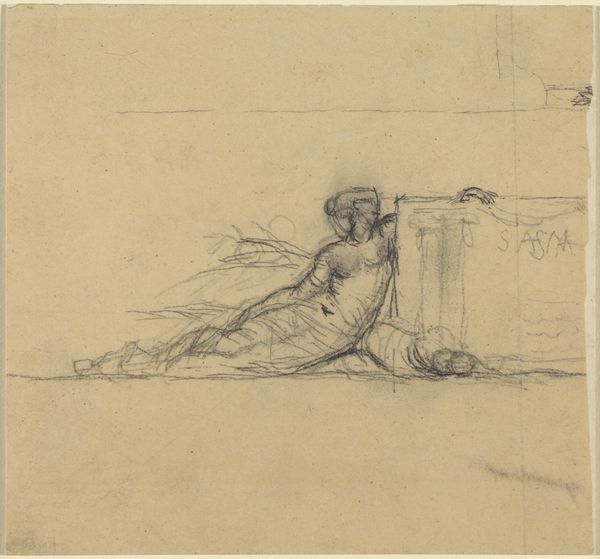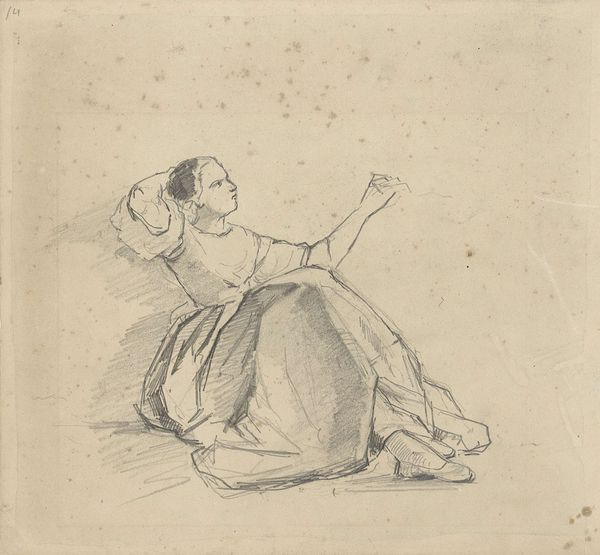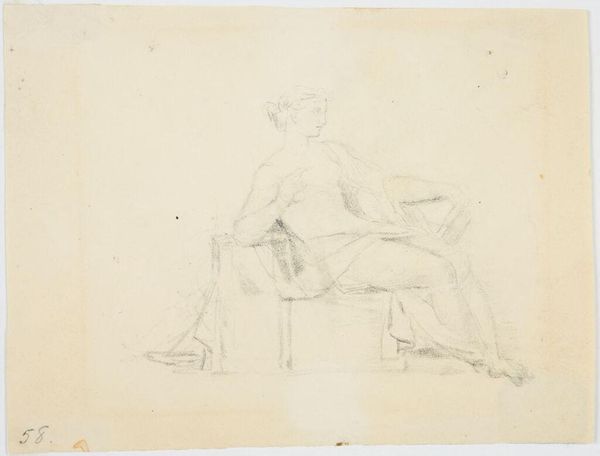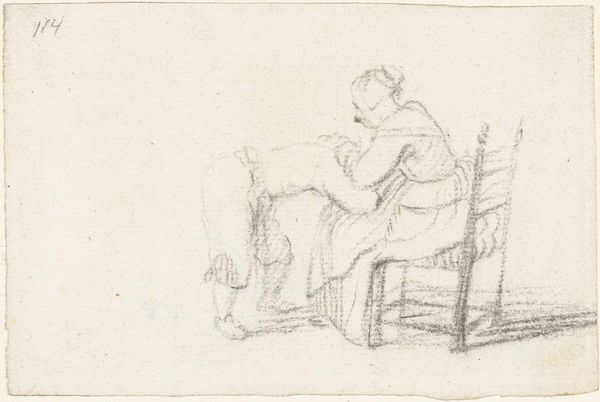
En frugtsommelig kvinde, siddende i profil til højre, på en antikt formet stol 1743 - 1809
0:00
0:00
drawing
#
portrait
#
drawing
#
etching
#
classicism
#
academic-art
Dimensions: 117 mm (height) x 149 mm (width) (bladmaal)
Curator: This is a drawing by Nicolai Abildgaard, titled "A fruit-loving woman, sitting in profile to the right, on an antique-shaped chair," created sometime between 1743 and 1809. Editor: It's rather melancholy, isn't it? The sepia tones contribute to a subdued atmosphere. Curator: The tonality is definitely integral to its character. The economy of line, particularly, lends an elegance even to its melancholy. Look how Abildgaard manages to suggest volume and depth with such minimal shading. Editor: Speaking of volume, notice how the woman’s draped clothing reveals and conceals at once? And, to think, an etching lends itself perfectly to dissemination. Curator: Absolutely. He understood the visual rhetoric of his time. Classical themes were vehicles for conveying not just beauty, but also ideals of virtue and civic duty. Notice, even the chair design evokes classical antiquity. It situates the figure within a particular lineage of thought and aesthetic value. Editor: So the classical setting almost serves to legitimize or elevate the subject in the eyes of the 18th century viewer. By using these recognizable motifs, he creates an expectation. And what does he do with those expectations? This image certainly departs from depictions of idealized women. The posture communicates some level of defeat. Curator: Precisely. While the subject carries elements of the classical, the work is by no means reverent. It almost seeks to test it, deconstruct it. It could also be argued that the composition is more about psychological exploration than the purely aesthetic. The shading communicates the figure’s state of mind—we observe a contemplative pose of subdued color, reflective of perhaps interior discord. Editor: It makes you wonder about her place in society, doesn’t it? Was she a woman of leisure, constrained by expectations? This one rendering elicits so many potential narratives. I never considered an etching could elicit so much emotive ambiguity! Curator: Abildgaard was certainly aware of the socio-political context into which his works were placed. So the real richness comes from exploring that contrast. It invites us to reassess our understanding of classical representations and reflect upon our present.
Comments
No comments
Be the first to comment and join the conversation on the ultimate creative platform.

